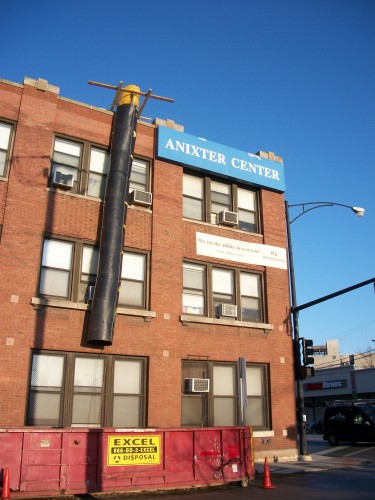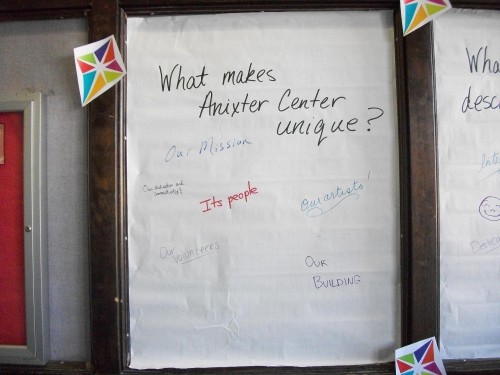Being a Dance/Movement Therapy Intern: sometimes it’s just that simple.
 I have been at my internship site, Anixter Center, for about two and a half months working with adults who have developmental disabilities. It’s hard to believe I have been there for so long–time certainly does fly when you’re a busy graduate student. What I have noticed in my time there is that I am becoming more comfortable as an emerging dance/movement therapist, and in those two short months I’ve grown so much.
I have been at my internship site, Anixter Center, for about two and a half months working with adults who have developmental disabilities. It’s hard to believe I have been there for so long–time certainly does fly when you’re a busy graduate student. What I have noticed in my time there is that I am becoming more comfortable as an emerging dance/movement therapist, and in those two short months I’ve grown so much.
Let me give you an example.
Every Wednesday morning I co-lead a dance/movement therapy group that focuses on meditation, breath, and relaxation. This sounds like a pretty simple concept, but for adults with developmental disabilities, relaxing is not always the easiest thing to do. Last week one of the clients, who is normally in the group, came in obviously upset. Not only was she crying heavily, but her breath was short and her body was tense (or as a dance/movement therapist would say, her body contained bound flow).
My co-therapist tried first to calm the client down, who had now decided to lay down on a mat amongst the rest of the group. Despite her attempt, the client continued to cry. I sat in my chair observing the client, and as I did so she gestured at me with her hand to come to her. After she did this I thought, “huh, that’s weird” since this client and I do not have a close relationship Despite my surprise (and confusion) I went and sat on the floor next to the client.
 In the very moment that I sat next to the client (who was still crying and breathing heavily), I had the impulse to simply put my hand on her back. Knowing that the use of touch is okay at my internship; I did it. I began to gently rub her back and give her slight moments of increasing pressure. This was a huge move. One, because it instantly helped soothe her and two, as an intern and beginning therapist I followed my intuition and did what I felt was right. It turns out it was right, at least in that moment.
In the very moment that I sat next to the client (who was still crying and breathing heavily), I had the impulse to simply put my hand on her back. Knowing that the use of touch is okay at my internship; I did it. I began to gently rub her back and give her slight moments of increasing pressure. This was a huge move. One, because it instantly helped soothe her and two, as an intern and beginning therapist I followed my intuition and did what I felt was right. It turns out it was right, at least in that moment.
As I did this I had the strange feeling that I wanted to lie down facing her (she was laying on her side with her head resting on her arm) so that I could truly mirror her. Mirroring is a technique used by dance/movement therapists as a way to show empathy on a bodily level. In my head I was contemplating if it would be appropriate to lay down next to her, but thought, “screw it” and I did it anyway. At this point she completely stopped crying. I took deep breaths as I laid next to her in hopes of serving as a model for her to modulate her own breath. She did.
After the group was over she hugged me and simply said, “I feel a little bit better.” It was all that I needed.
What I just illustrated sounds pretty simple, and in all reality, it is. Yet, I do have to say that at a deeper level what I did was not something anyone or anybody could do. In the DMT & C program I have been taught how to use my somatic sensations and intuitive felt-senses as intervention tools. Just because you’ve taken a yoga class that focuses on breath doesn’t mean you could do this.
I think that what was even more important to me after this session (other than helping my client) was how validating the experience was for me. I simply laid next to my client, facing her, was with her in that moment and that was enough. I, in my own essence, was enough. Not only that, but that I had followed my intuition and that what my felt-sense was telling me to do was exactly what my client needed. As an intern I didn’t have to think of some grandiose intervention tool, I just had to be me.
And sometimes it’s just that simple.
